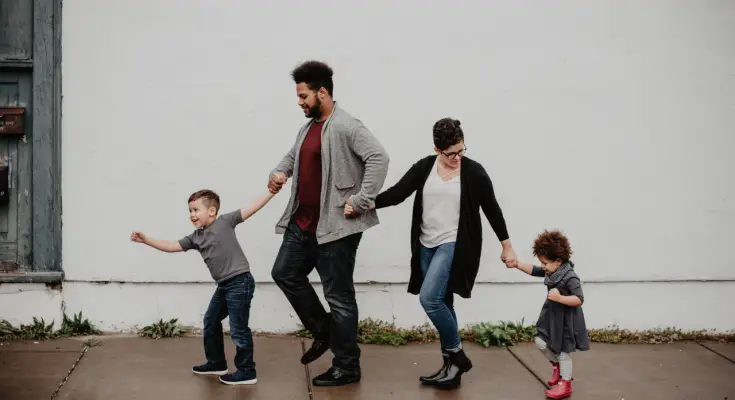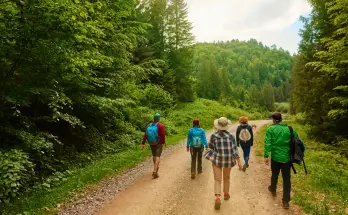Do you remember those happy days when you’d race out the door after school to play?
Whether it was climbing trees, throwing a football or simply chasing after friends, playing outside wasn’t just fun, it was necessary.
Yet, what if I said those sessions were doing more for your brain than you would have ever imagined?
Let’s explore the uncanny biology of outdoor play and its staggering effects on the brain.
You’ll be done reading when you realise that the great outdoors is not only an outdoor playground, but a potent brain boost that we’ve long been ignoring.
The Digital Dilemma
Before we discuss the pros of outside play, let’s address the elephant in the room: screens. Children are now spending more time indoors in front of a screen than ever before. According to one recent report, children spend an average of 7 hours a day in front of screens. It’s time they’re not spending running, exploring, and, above all, developing their brains.
But here’s the catch: brain development prefers a variety of inputs. The sterile, monotonous interaction of screen time is nothing in comparison to the diversity of the experience that is out there. But what exactly is at stake here?
Brain Growth 101: Why Play Matters
To see why outdoor play has such power, consider the evolution of the brain for a moment. As children, neural circuits – the circuits in the brain through which we think, learn and feel – form at a startling pace. These bonds rely on interaction, movement and touch. And guess what? Playing outdoors fulfils all those requirements.
1. Movement Fuels the Mind
Running, jumping or climbing is a physical challenge to the brain as well as the body. Exercise pumps more blood into the brain, which in turn transports oxygen and nutrients that aid cognitive function. Researchers found that children who exercised were more successful at school in terms of their memory, attention and problem solving abilities.
2. Nature Nurtures Creativity
Imagine a child standing in a field or a wood. There are no pre-programmed programs, no user guides. It is their job to come up with games, and problems, and explore the world. Such messy play is fertile ground for creativity. The more kids experiment and play around with it, the more creative they become.
3. Social Skills Blossom Outdoors
Outside play is not all about personal development. When children interact, from playing tag to building a fort, they develop vital social skills such as cooperation, negotiation and conflict resolution. Such encounters form the prefrontal cortex, the brain area responsible for making choices and controlling emotion.
The Science Speaks
Well, in case you still don’t believe me, let’s go scientific. A dazzling paper from the University of Michigan showed that children who spent just 20 minutes outdoors noticed dramatic improvements in their concentration levels. Another Danish study found that kids exposed to green spaces were 55% less likely to develop mental illness in adulthood.
And it’s not just about mental health. Outdoor play has been shown to increase academic achievement. A team of scientists at Stanford University found that children exposed to the outdoors were more able to pay attention and retain information than children indoors.
The Challenge – Why Don’t Kids Play Outside?
If outdoor play is so good for kids, why aren’t more kids playing outdoors? The answer lies in a combination of cultural changes:
- Urbanization: Many families now live in urban areas where safe outdoor spaces are scarce.
- Fear: Parents worry about safety, from traffic to stranger danger, keeping kids indoors.
- Busy Schedules: Between school, homework, and extracurriculars, free play often gets sidelined.
- Technology: Let’s face it, video games and YouTube are stiff competition for the great outdoors.
What Can We Do?
But here’s the good news: things can be different. Making outdoor play fun doesn’t have to be complicated and cumbersome. It’s about making sure that children can get out into their world and explore it. Here are some actionable tips:
1. Prioritize Playtime
Don’t skip out in the outdoors. As little as 30 minutes a day can make a big difference in brain growth.
2. Explore Together
Lead by example. Go on family walks, hikes or bike rides. – Kids will take outdoor play more seriously when they see adults doing it.
3. Create Safe Spaces
If you’re worried about safety, find local parks or community centers where kids can play freely and securely.
4. Limit Screen Time
Set boundaries for screen use and encourage kids to swap their devices for outdoor adventures.
5. Unstructured Play Rules
Let kids take the lead. Resist the urge to over-schedule or micromanage their outdoor time. The less structured, the better.
The Ripple Effect
Playing outdoors, it extends its effect throughout a child’s life. They’re not merely having fun, they’re setting the stage for a healthier, happier future. Better focus at school, stronger relationships, better mental health are merely the tip of the iceberg. They are also becoming enamoured with nature, and this is what we need as we face climate catastrophe.
It’s Time to Rediscover the Outdoors
The true reality of outdoor play and brain development is not what we’ve lost but what we can take back. When we make outdoor play the focus, we are equipping children with the resources to succeed academically, emotionally and socially.
So the next time you witness a child’s gaze at a screen, ask yourself: what might they be acquiring by being outdoors? The solution may surprise you.




